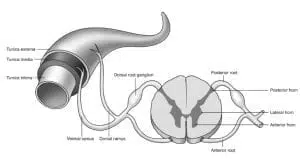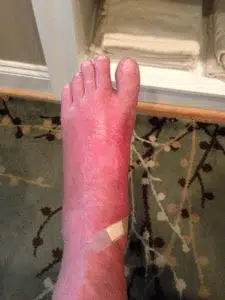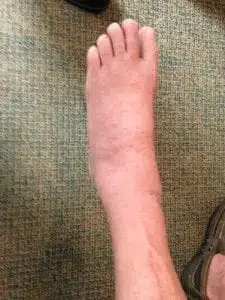Fascial Counterstrain for the Arterial System
The arterial system is the part of our vascular system that brings nutrition and energy to every part of our body including our brain, organs, nerves, joints, muscles and all the connective tissues including our skin.
Impaired arterial flow can lead to chronic pain, weakness and degeneration of the target tissue.
How do Arteries Become Dysfunctional?

Like all other parts of the vascular system, arteries are completely enveloped in deep fascia which can become strained or inflamed. When this occurs, connections into the spinal cord can cause contractions of the smooth muscle inside the vessel leading to a local arterial “vasospasm.”
What are the Results of Arterial Dysfunction?
Arterial fascial dysfunction can lead, in the short term, to symptoms such as chronic pain and weakness due to a lack of nutrition and energy. However, if the vasospasm persists over multiple years, degeneration and tissue breakdown can occur.
This condition, identified by the presence of specific arterial tender points, is strongly associated with the following conditions (partial list): Muscle pain, Achilles tendonitis, shoulder tendonitis, elbow tendonitis, migraine headaches, burning type nerve pain, lower back pain, neck pain, TMJ dysfunction, degenerative joint disease, degenerative disc disease etc.
How Does Fascial Counterstrain (FCS) Address This Condition?
FCS utilizes specific fascial glides targeted to the dysfunctional vessels to alleviate the localized vasospasm and drain regional inflammation which maintains the condition. One 45 second release per vessel is typically sufficient to “reset” the vessel tone back to baseline, restoring normal blood flow to the regional tissues.
The flowing case study below demonstrates the effectiveness of FCS therapy.
The patient suffered a compound tibio-fibular fracture and severed 2 of the 3 main arteries of the lower leg. Following metal fixation of the fractures and vascular surgery to repair the arteries, the patient’s ankle blood pressure was found to be insufficient. An additional procedure was performed (femoral stent placement) to increase blood flow; however, only 50% normal pressure was achieved. The attending vascular surgeon felt amputation was a distinct possibility due to the likelihood of tissue breakdown subsequent to poor tissue nutrition.
The above patient was referred for a trial of FCS therapy in an attempt to save the patient’s ankle from the prospect of amputation and to restore normal function. A palpable arterial pulse was restored after only one session of FCS and after several weeks of additional treatment, ankle blood pressure was restored to normal.


Brian Tuckey PT, OCS is the originator of FCS for the arterial system and currently teaches the technique to physical therapists and manual therapists worldwide.
If you feel you may have arterial dysfunction and wish to receive treatment, you can set up an evaluation with one of the FCS trained practitioners here at Tuckey and Associates Physical Therapy or use the Counterstrain.com or JIcounterstrain.com websites to find a practitioner in your area.

